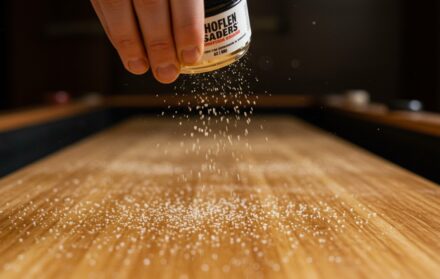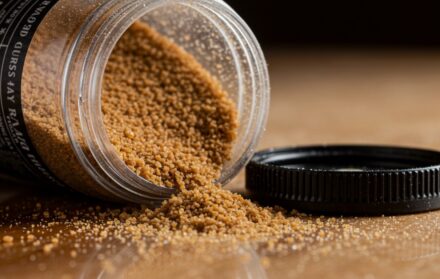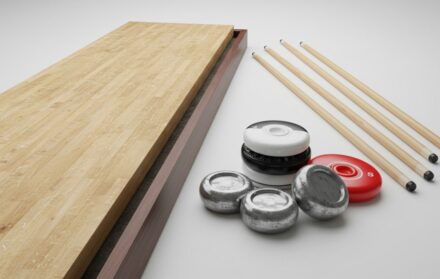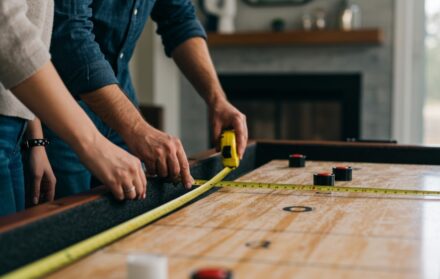How to Learn Shuffleboard for Beginners
At first glance, shuffleboard looks deceptively simple. You slide a puck along a smooth surface, aiming to land in the scoring zones, and perhaps nudge your opponent’s piece out of position along the way. But the first time most beginners try it, they quickly discover that shuffleboard is a game of touch, control, and a surprising amount of strategy. Some pucks fly straight off the end. Others stop frustratingly short. And even when you manage to land one in a scoring zone, an opponent can easily knock it aside.
Despite this learning curve, shuffleboard is one of the easiest pub and leisure games to pick up. With a few basic rules, a little practice, and the right mindset, beginners can quickly become competent players. This guide on shuffleboard for beginners will walk you through everything you need to know, from the equipment and rules to the essential skills, practice routines, and strategies that help new players improve quickly.
Whether you’re trying shuffleboard in a lively London bar, on a cruise ship holiday, at home on a newly purchased table, or even preparing for your first shuffleboard tournament, these tips will give you the confidence to enjoy the game straight away.
Getting to Know Shuffleboard
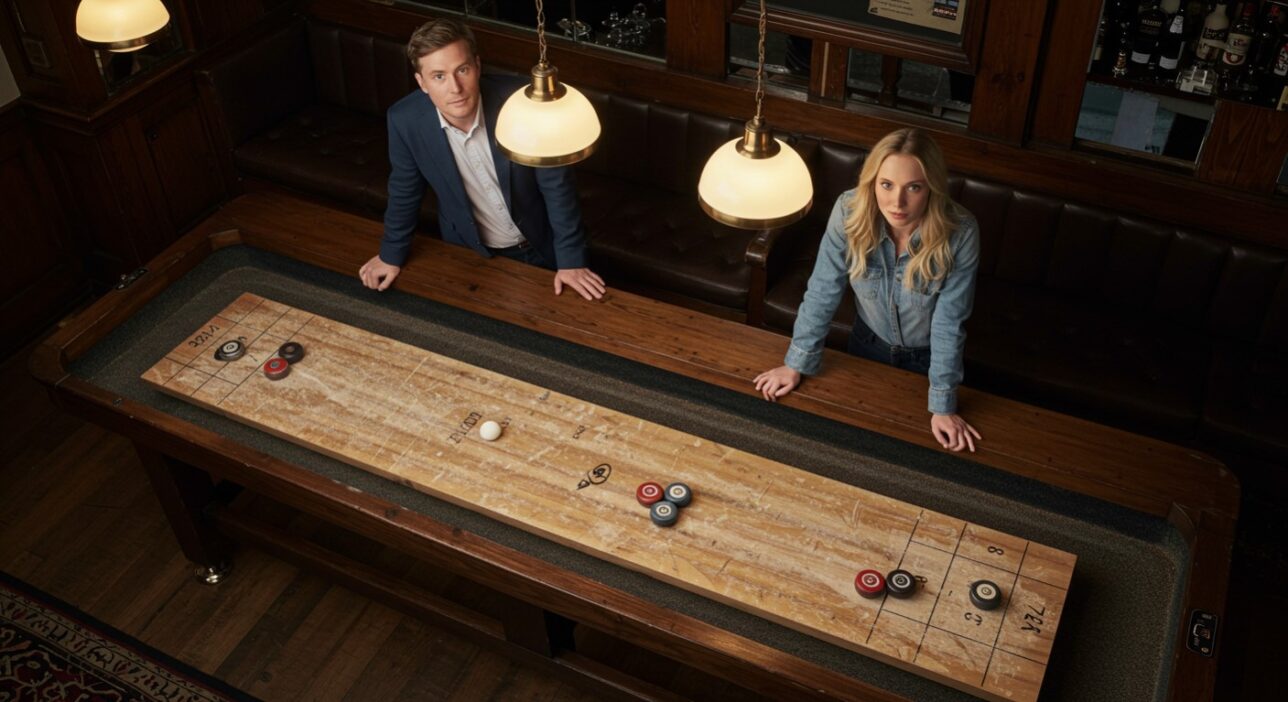
Shuffleboard has been around for centuries, with its earliest forms traced back to 15th-century England. What began as a tavern pastime with coins or flat discs evolved into the modern versions we know today. In pubs and clubs, shuffleboard usually takes the form of a long polished wooden table, where players slide pucks by hand. On cruise ships and in community centres, deck shuffleboard is played on large courts with long sticks, called cues, to push discs across the floor.
For beginners, table shuffleboard is the easiest place to start. You are closer to the action, the pucks are smaller and easier to handle, and you can learn the basics of scoring and strategy without worrying about long-range pushes. Deck shuffleboard has its charm, but it requires more space, more equipment, and is often slower paced.
Understanding the Basics of Shuffleboard
Before you can play, it helps to grasp the fundamental rules and equipment.
Objective of the Game
The aim is straightforward: slide your puck so it lands in a scoring zone while preventing your opponent from doing the same. You can block, knock, and defend, but the winner is the one with the highest points at the end of the game.
Equipment
-
Table shuffleboard: a smooth, waxed wooden table, usually between 9 and 22 feet long.
-
Pucks (weights): small, metal discs with coloured tops, typically red and blue to distinguish teams. Each player has four.
-
Shuffleboard wax: fine powder sprinkled on the table to reduce friction and help pucks glide.
-
Deck shuffleboard equipment: a painted court, large plastic discs, and long cues to push them.
Scoring
-
Table shuffleboard: Points are awarded based on zones at the far end of the table. The closest zone is worth 1 point, the middle 2 points, the farthest 3 points. A “hanger” — a puck overhanging the edge — is often worth 4.
-
Deck shuffleboard: Triangular zones are worth 7, 8, or 10 points, but landing in the “10 off” area deducts points.
The details vary depending on house rules, but the principle is always the same: accuracy beats power.
Step-by-Step Guide to Playing Your First Game
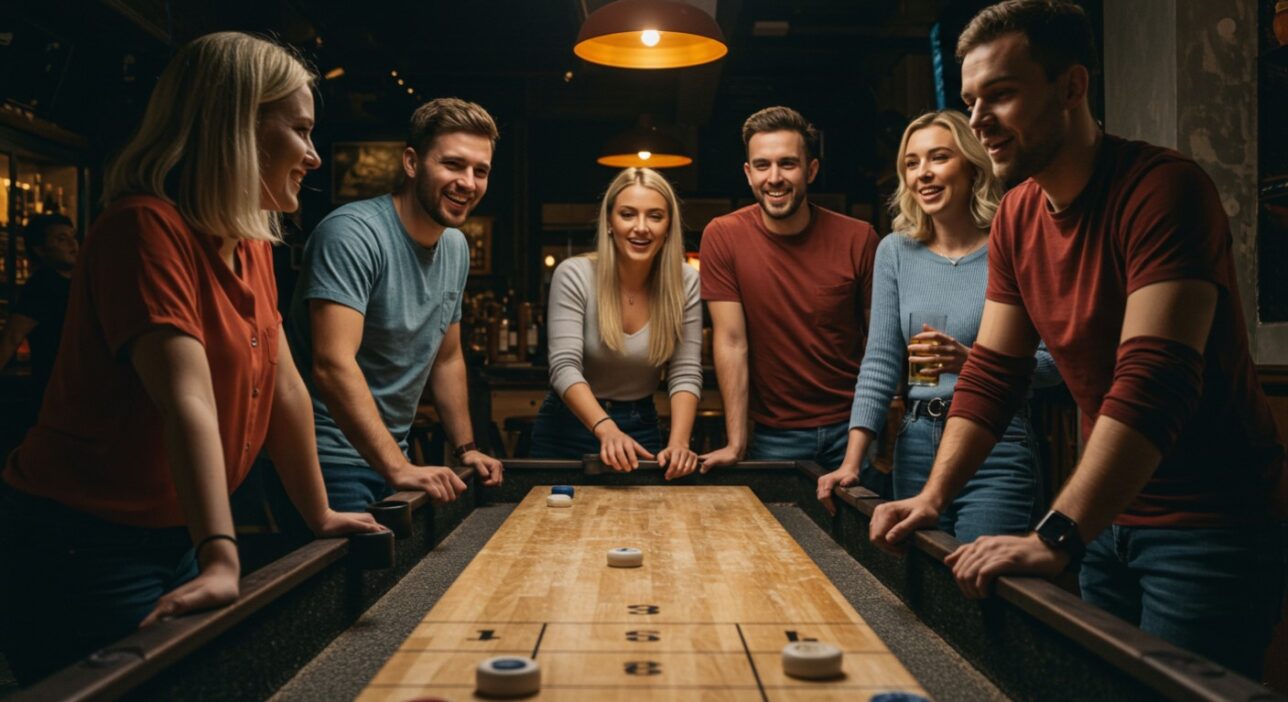
If you’ve never played shuffleboard before, here’s a simple walkthrough to get you started.
-
Set up the table or court. Make sure the surface is waxed, brushed, and clear of debris. On a table, place the pucks at one end. On a deck court, line up discs behind the baseline.
-
Decide teams and colours. Two players face off in singles, or two pairs in doubles. One side takes red pucks, the other blue.
-
Take turns sliding. Players alternate turns, sliding pucks down the table or court. The goal is to land in scoring zones without sliding off.
-
Complete a round. Once all eight pucks are played, check the positions. Only the player or team with the closest puck to the scoring end scores points that round. They count all of their pucks ahead of the opponent’s best.
-
Play to a set score. In pubs, games are often played to 15 or 21 points. On deck shuffleboard, it may be 75 points or best of 8 or 10 rounds.
That’s it. In five steps, you can play your first game.
Core Skills for Shuffleboard Beginners
Once you know how to set up and score, the next challenge is mastering the basic skills that make you a competent player.
Grip and Release
The way you hold and release the puck determines its path. Place the puck comfortably in your hand with your fingers resting lightly on the sides. Slide it smoothly, avoiding jerky movements. Beginners often grip too tightly, causing the puck to wobble. Relaxed control is key.
Speed and Power
Most beginners overshoot. The waxed surface is much faster than it looks. The goal is to push just enough so the puck reaches the scoring zone without sliding off the end. Practice different levels of power to get a feel for how far a gentle push versus a strong push sends the puck.
Aim and Angles
It’s not always about sliding straight down the middle. Skilled players aim at angles, blocking opponents or glancing off pucks to knock them aside. Beginners should first practise straight shots, then experiment with angled ones once they have confidence.
Practice Routines to Improve Quickly
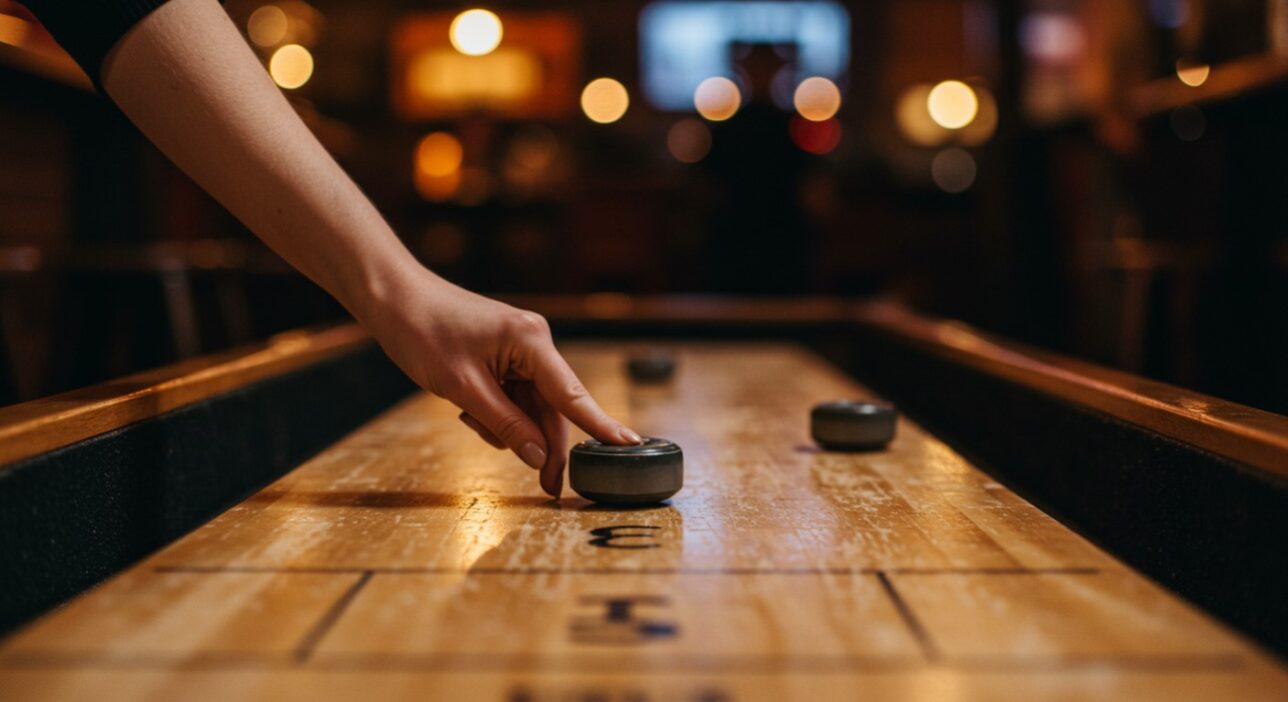
Like any game, shuffleboard rewards practice. The good news is that drills can be fun and don’t require hours of training.
-
Zone control drill: Try to land three out of four pucks in the 2-point zone. This builds touch and consistency.
-
Knock-off drill: Place a puck in the 3-point zone and practise knocking it out with your shots. This improves aim and control.
-
Stop short drill: Slide a puck so it stops just before the scoring line. This helps develop finesse and avoids overshooting.
-
Family challenge: Set fun targets, such as who can score exactly 10 points with four pucks, to keep practice engaging.
Spending just 20 minutes on drills each session helps beginners improve quickly.
Common Mistakes Beginners Should Avoid
Learning quickly often means avoiding pitfalls that slow progress.
-
Overshooting: The most common mistake. Beginners underestimate how fast the table is and send pucks flying off.
-
Neglecting the table: Playing without brushing or waxing makes the game frustrating and inconsistent.
-
Ignoring rules like the foul line: Pucks must be released from behind it.
-
Playing with too much focus on scoring: Strategy matters more — sometimes blocking is better than going for points.
By being aware of these mistakes, beginners can sidestep frustration and progress faster.
Quick Strategies That Work for Beginners
You don’t need to be an expert strategist to win games. A few simple tactics go a long way:
-
Play safe with the first puck. Instead of aiming for 3 points straight away, slide gently into the 1- or 2-point zone to establish a base.
-
Use blocks. Placing your puck in front of the scoring zone forces your opponent to take risks.
-
Think defensively. Sometimes knocking out your opponent is better than going for points.
-
Stay calm. Don’t chase every point aggressively; patience wins games.
Even these basic strategies can give beginners an edge.
Where Can Beginners Learn Shuffleboard?

The good news is that shuffleboard is becoming more accessible in the UK and abroad.
-
Pubs and bars: Many modern venues now feature shuffleboard tables, particularly in London and Manchester. They are perfect places to practise casually with friends.
-
Cruise ships: Deck shuffleboard remains a classic holiday pastime, with friendly competitions often hosted by staff.
-
Home tables: Compact models make it possible to practise at home, turning shuffleboard into a family activity.
-
Clubs and leagues: For those who want to improve quickly, local clubs offer structured practice and experienced opponents.
Beginners learn fastest when they play regularly in social settings.
Tips for Staying Motivated as a Beginner
Learning shuffleboard quickly is not just about skill — it’s about staying motivated. Here’s how to keep it fun:
-
Play short games. Instead of racing to 21 points, start with games to 10 to keep things moving.
-
Compete with friends at your level. Playing against people of similar skill builds confidence.
-
Track progress. Count how many pucks land in scoring zones each game and aim to improve.
-
Mix things up. Try variations, like doubles or target challenges, to avoid repetition.
Motivation grows when practice feels like play.
Conclusion: Learning Shuffleboard for Beginners Quickly and Enjoyably
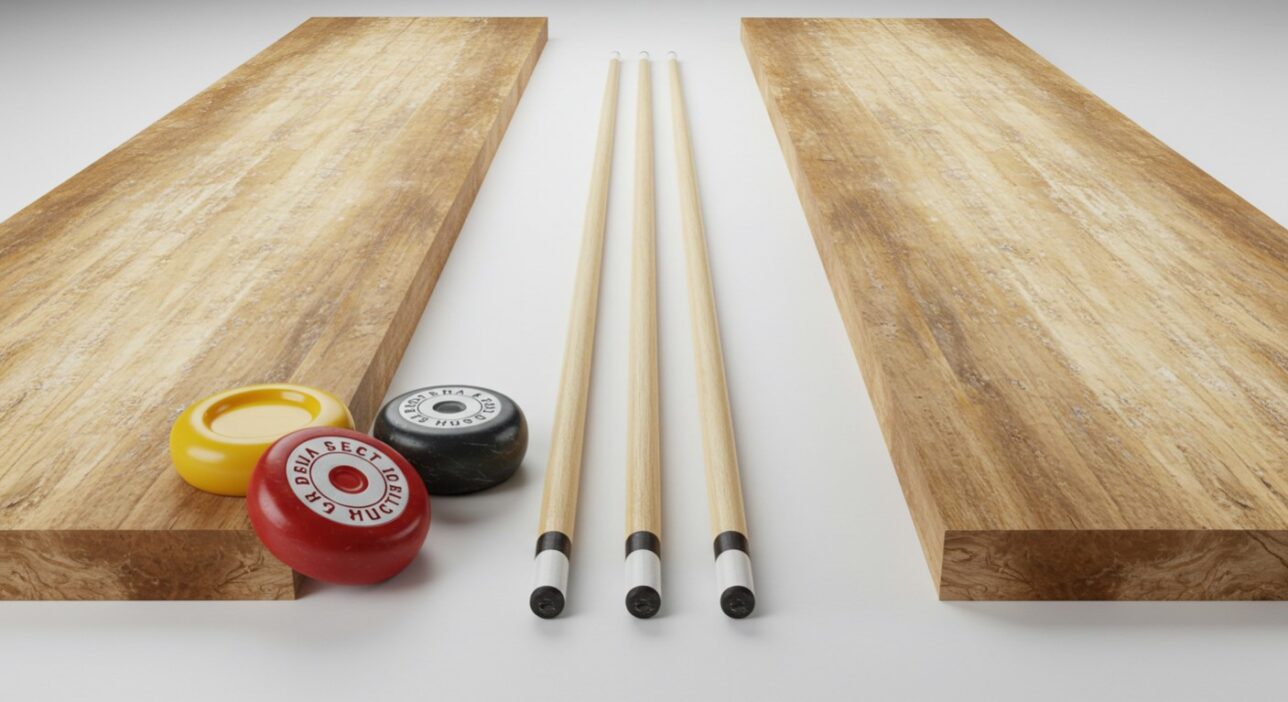
Shuffleboard may look easy, but like darts, pool, or table tennis, mastery comes from practice, patience, and a good grasp of the basics. For beginners, the fastest way to learn shuffleboard is to understand the equipment, know the rules, develop touch and control, and avoid common mistakes. With simple drills, safe strategies, and regular play, progress comes quickly.
The beauty of shuffleboard is that you don’t need years of training to have fun. After just one or two sessions, beginners can compete with friends, enjoy close games, and even start developing their own style. Whether you’re playing in a buzzing pub, on a sunny ship deck, or at home with family, shuffleboard is ultimately about connection, laughter, and the simple joy of seeing a perfectly placed puck glide into scoring position.
So pick up a puck, give it a smooth push, and start playing. Shuffleboard is waiting for you — and you’ll be surprised how quickly you can learn.

